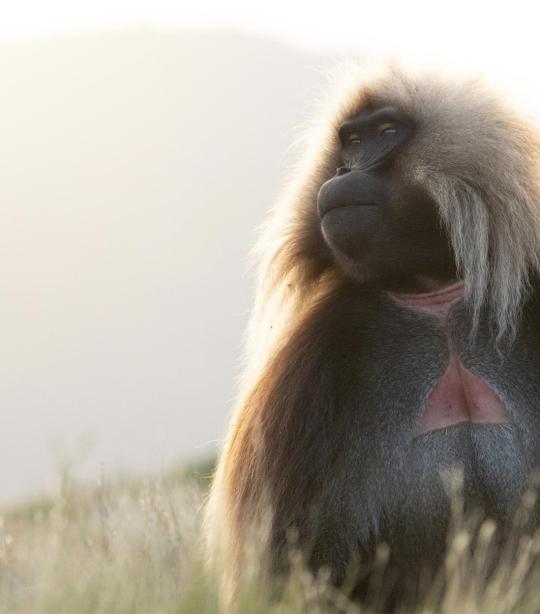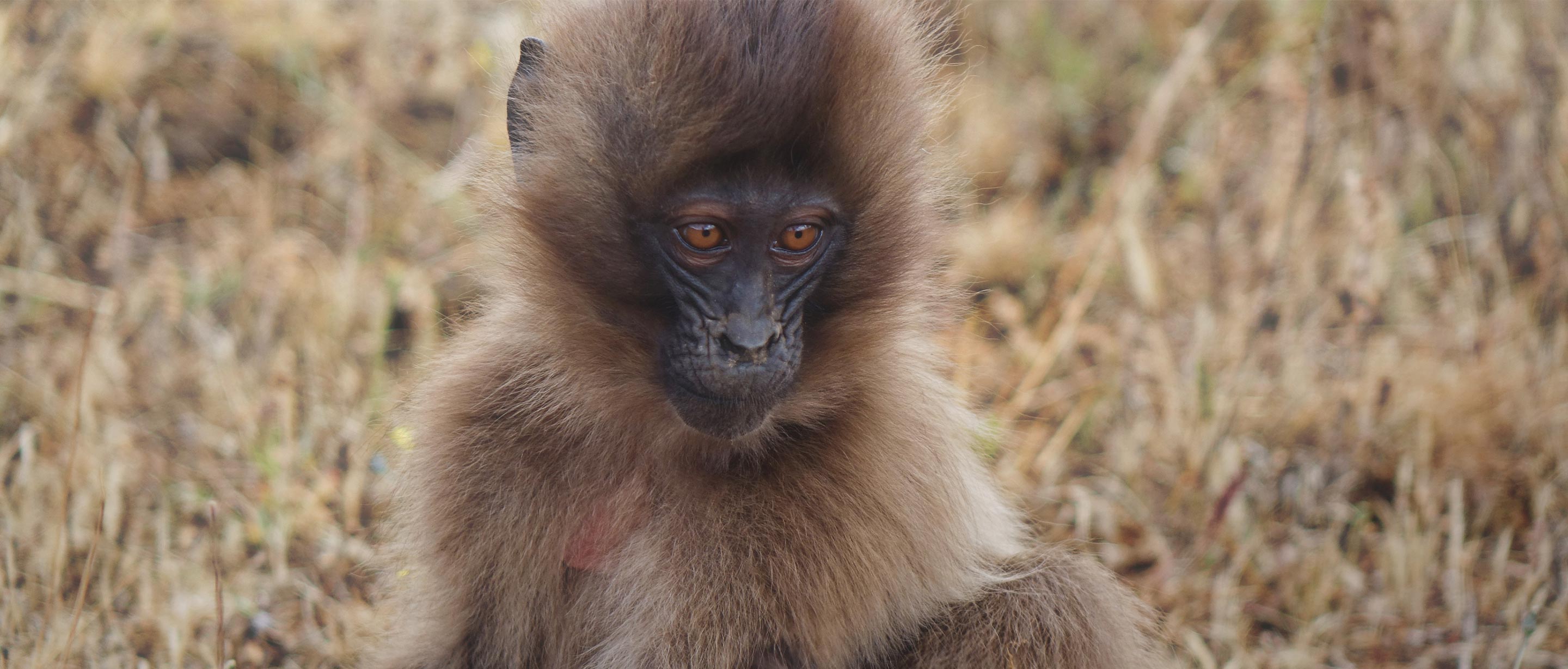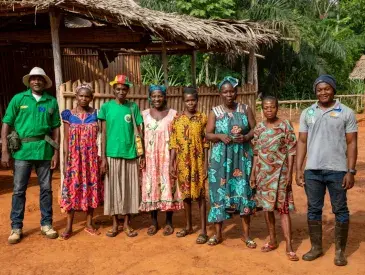What is a gelada?
The gelada is often referred to as the gelada baboon and the bleeding-heart baboon but is not a true baboon. These brown and grey primates are Old World monkeys that do bear some similarities to baboons. Twice the size of females, males are as big as a large dog and are equipped with vampiric canines, which they often bare at each other as a display of dominance or aggression. Both sexes have large, fluffy manes, as well as distinct, hourglass-shaped, bald patches of skin on their chests. They also have the most opposable index fingers and thumbs than any other primate.
Theropithecus gelada
Females: average 15 kilograms (33 pounds) Males: average 20 kilograms (44 pounds)
Males: 69 to 74 centimeters (27 to 30 inches) tails add 45 to 50 centimeters (17 to 20 inches) Females: 50 to 65 centimeters (19 to 21 inches) tails add 30 to 41 centimeters (11 to 16 inches)
14 to 20 years in the wild; up to 30 years in captivity
Mountain grasslands, mountains
Omnivorous
5 to 6 months
Leopards, hyenas, feral dogs, bearded vulture, jackals, foxes, servals, humans

Challenges
Geladas are losing the battle for food.
As Ethiopia’s agriculture expands, competition for grazing areas is increasing between the monkeys and domestic livestock. Geladas are the ones losing ground, being pushed to less productive mountain slopes. Deforestation and soil erosion are also seriously harming their food supply.
People pose a threat.
Humans also take a toll on the gelada population, shooting these monkeys when they are perceived as crop pests, or sometimes capturing them for use as lab animals. Historic records indicate their capes used to be made into fur hats for tourists though that practice is now banned, and additionally, indigenous peoples use their manes in traditional coming-of-age ceremonies.
Solutions
Our solutions to protecting the gelada:
African Wildlife Foundation is working to establish new mechanisms for ensuring local communities’ livelihoods. Our Simien Mountains Cultural Tourism project is improving infrastructure and accommodations in and around the national park. Increased revenue from community-owned and operated tourism will reduce dependence on subsistence farming.
AWF works with communities to enhance livelihoods, food security, and conservation through sustainable, long-term land-use planning. We help communities understand their goals for the future and help them zone their lands in ways that will make their vision a reality and sustain it over the long term.


Behaviors
Geladas stay grounded.
Spending almost all of their time on the ground, geladas are the world’s most terrestrial primates — with the exception of humans. They are poor tree climbers and spend 99 percent of their time on the ground partly because of their extreme dietary specialization as a grazer. Specially adapted to live high up in the mountains, they use small ledges on the steep, rocky cliffs to escape predators; they also sleep on these edges huddled together in small groups.
They form large, gregarious groups.
The gelada family unit — a harem — usually consists of one male, three to six related females and their young. Females dominate society and may decide to replace their male leader with a younger rival if it suits them. Many harems combine to form troops or bands, which can range from 30 to 600 individuals. As these monkeys possess one of the most varied vocal repertoires of all primates, these troops can be incredibly noisy.
Female geladas are the caretakers.
Gelada females give birth to one infant at a time and reproduce every two years. The female is the sole caretaker of the new infant. While females are sexually mature between four and five years old, males attain sexual maturity between five and seven years of age. The patch of skin on a gelada’s chest is indicative of the individual’s hormone levels. Males’ patches turn a bright red during their sexual prime, while females’ chest patches blister during estrus. This has earned the monkeys the nickname, “bleeding-heart baboons.”
Diet
The gelada grazes to survive.
Geladas primarily eat leaves of grasses, though they will opportunistically eat fruits, invertebrates, and even cereal crops where agriculture abuts their habitat. These grazers are the last surviving species of once-numerous grass-eating, terrestrial primates.
Habitats
Where do geladas live?
The gelada is an Old World monkey epidemic to the Ethiopian Highlands, with large populations found in the Simien Mountains. They are restricted to high grassland escarpments in the deep gorges of the central Ethiopian plateau.



